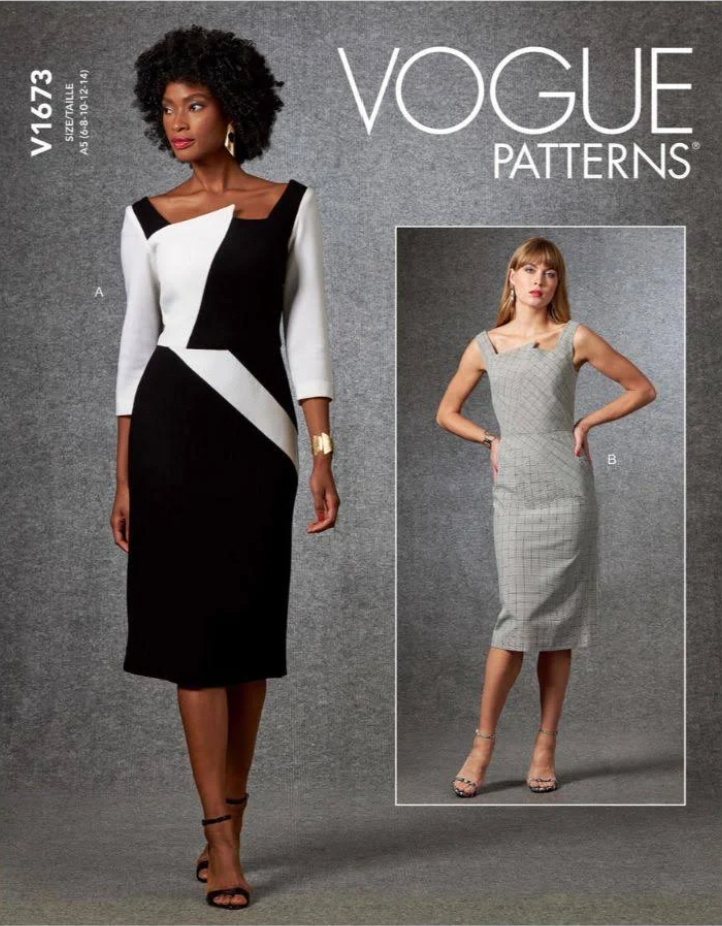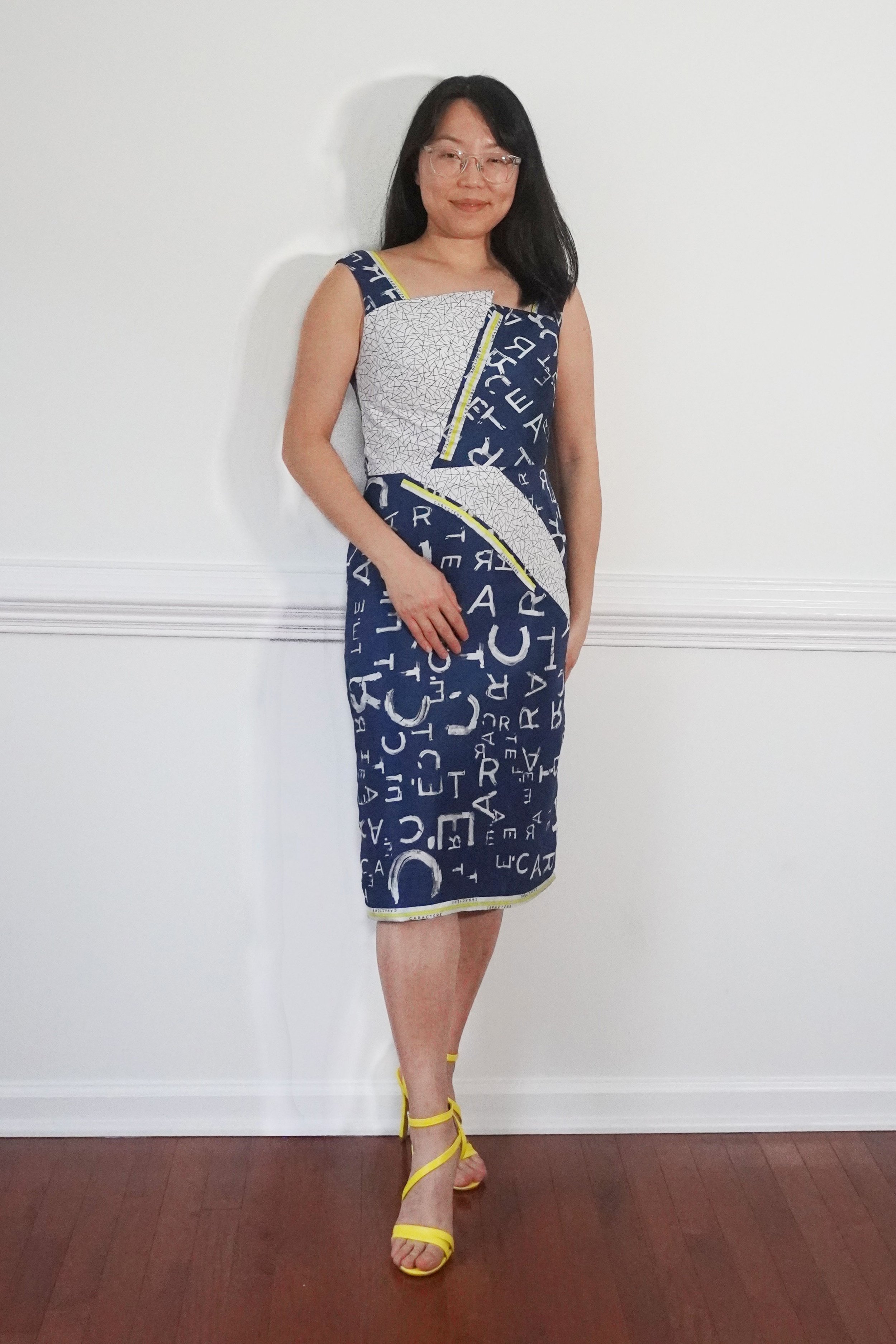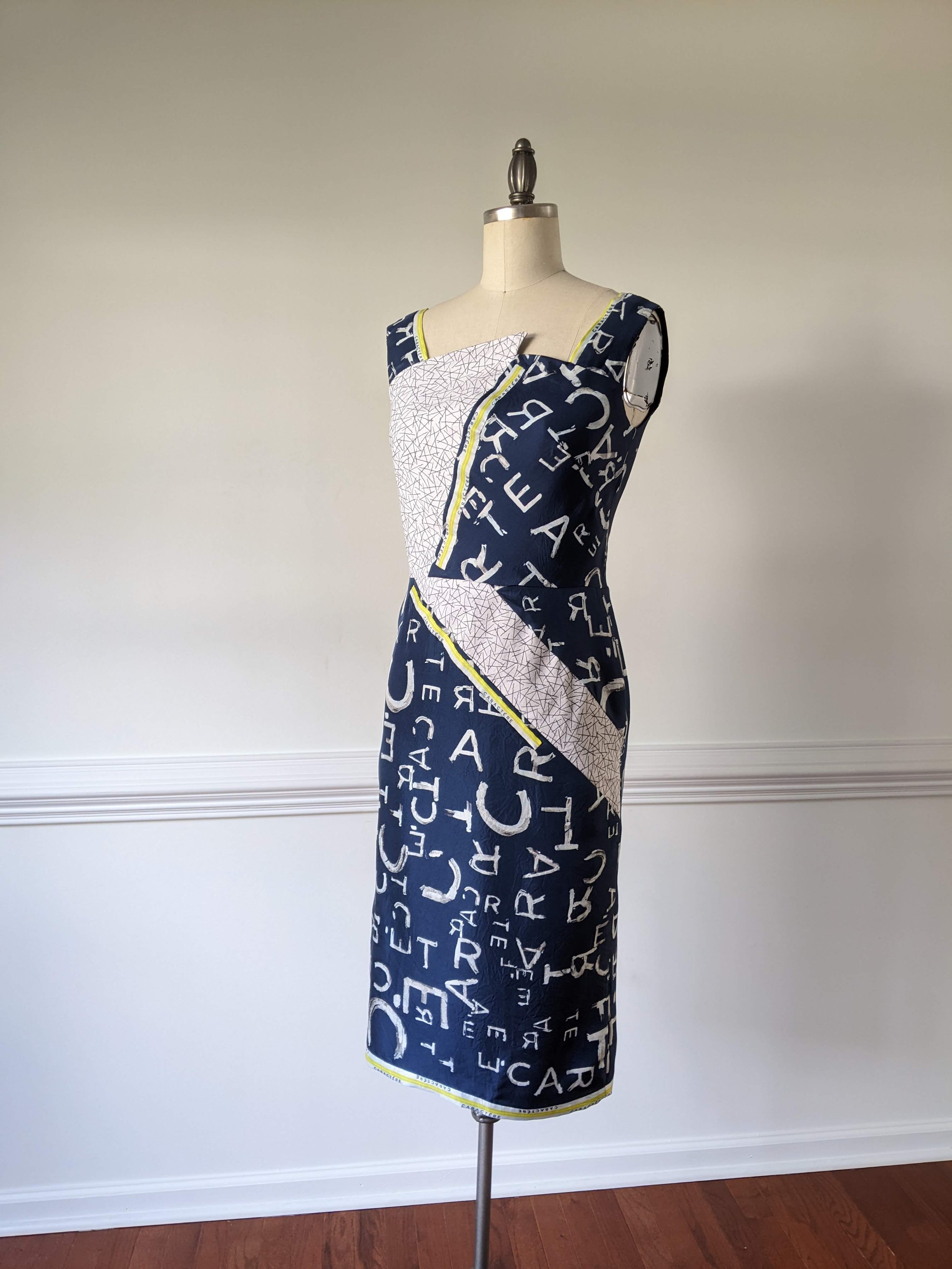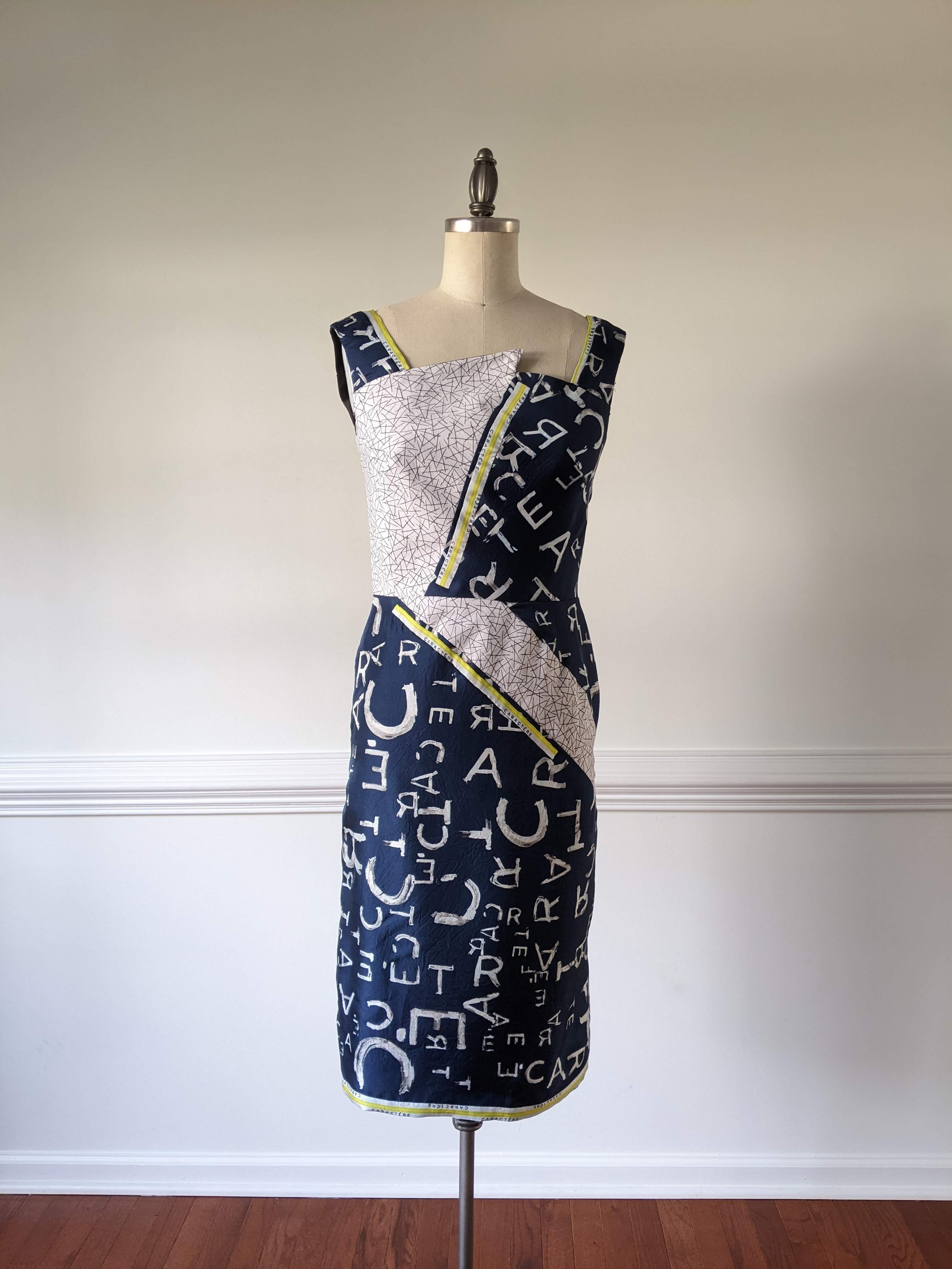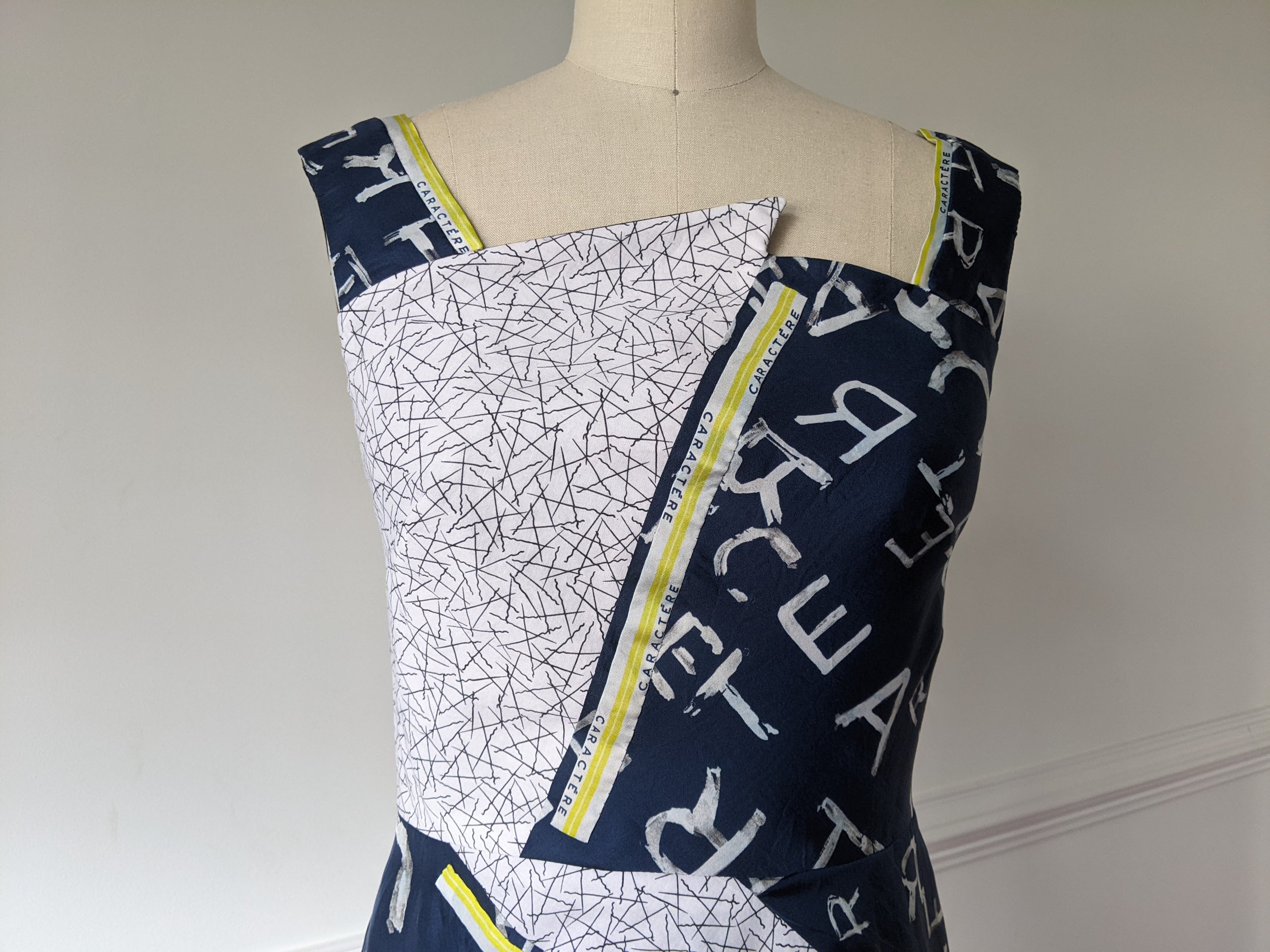I’m a huge fan of repurposing leftover fabric scraps, and my local thrift store has a section devoted entirely to castoff scraps donated by local sewists. Every time I head to that store, I keep an eye out for anything that catches my eye, even if I don’t have a specific project in mind for that particular fabric. That’s how I ended up picking up a remnant of navy blue silk festooned with white letters, and a small piece of white quilting cotton with black squiggly lines.
I didn’t have much of either fabric, so I thought it might be fun to do some print mixing and put them together into one dress. The challenge was how to mix these two fabrics, which have very different hands. The navy silk was very lightweight and drapey, while the quilting cotton was stiff and crisp. Where would I find a design that would accommodate both?
After browsing through the Vogue/McCalls/Butterick online catalogue, I landed on two possibilities: Vogue 1673, a sheath dress with asymmetrical details, and Vogue 1797, an A-line dress with an overlay at the skirt.
I was really torn between these two patterns. Vogue 1797 seemed like a better fit for the fabrics I had - I could use the stiffer quilting cotton for the bottom layer and the bands, and the drapier silk for the overlay. But I was worried that the silhouette was a bit too juvenile for me at this stage in my life, and my heart really wanted to go with the asymmetric, sleek design of Vogue 1673. Eventually my heart won out and I decided to go with Vogue 1673, reasoning that it was better to try to make a dress that I thought I would love (even if the fabric choice ended up being less than ideal), rather than start with a design that I was ambivalent about to begin with.
Cutting and Construction
I went with my usual Vogue sizing and cut a size 10 at the bust and hips, tapering to a size 12 at the waist. I considered making my usual small hollow bust adjustment and straight back adjustment, but decided that they probably weren’t necessary because the neckline in both the front and back are quite low. I also lined the dress in a black stretch polyester lining from Joann Fabrics.
In terms of construction, this dress is very simple, and I barely even looked at the instructions when sewing it up. That said, even with this super-simple construction, I still managed to run into a few problems along the way (because when have I ever had a plain sailing sewing project?).
First, and most despondently, my usual sizing in Vogue patterns failed me, and I could barely even zip up the dress the first time I tried it on! I’m not sure if I made a mistake when tracing out the pattern, or maybe some of the seam allowance on my silk pieces frayed massively before I sewed them up, or maybe it was the 4 dozen cookies I ingested over the holiday season, but for whatever reason, I had to take out the side seams and let them out by a good 3/4 inch at each side seam.
Second, as predicted, the silk fabric just wasn’t the right choice for this fitted dress. The pattern calls for you to interface several of the pieces, but I was worried that applying the interfacing directly to the silk would ruin the delicate fabric, so I instead decided to interface the lining. That did help give the silk fabric more structure, but not quite enough (as you’ll see from the pics of the finished dress below, the silk fabric bubbles a bit at the side seams instead of laying flat). In retrospect, I should have interfaced the silk fabric with some lightweight sew-in interfacing like silk organza, which would have given the fabric the stiffness it needed without directly adhering to the fabric itself.
Third, the angled strap really drove me crazy, as it makes the dress really difficult to wear. It also just seems like an odd design choice — the dress overall seems like a work dress, yet what professional woman wants her dress strap to look like it is on the verge of falling off her shoulder? The strap was also too narrow, so my bra strap constantly peeked out from underneath the strap. I tried to solve these problems by adding an extra band of the yellow border from my navy silk fabric, to make the strap wider. I’m also planning to make some simple bra strap holders using some ribbon and snaps.
To make life even more difficult for myself, I decided that the finished print-mixed dress wasn’t quite busy enough, so I cut some of the yellow border and appliqued it to the dress, to emphasize the angles of the seamlines.
The Finished Dress
Despite all of the roadblocks that I ran into, I do really like the finished garment. Here are some pics of the finished dress on me and on my dress form:
I don’t think I’ll make another one of these dresses, but it was fun to play with these prints and experiment with using them in unexpected ways. One thing I particularly like about the pattern is how the pieces use different grainlines - the front bodice is cut on the bias, whereas the skirt and back bodice are cut on the straight grain. I think this pattern could be really fun made up in a striped fabric that really emphasizes the differences in the grainline.
If you’d like to see more of the construction process for this dress, check out the reels I posted to my Instagram account:

